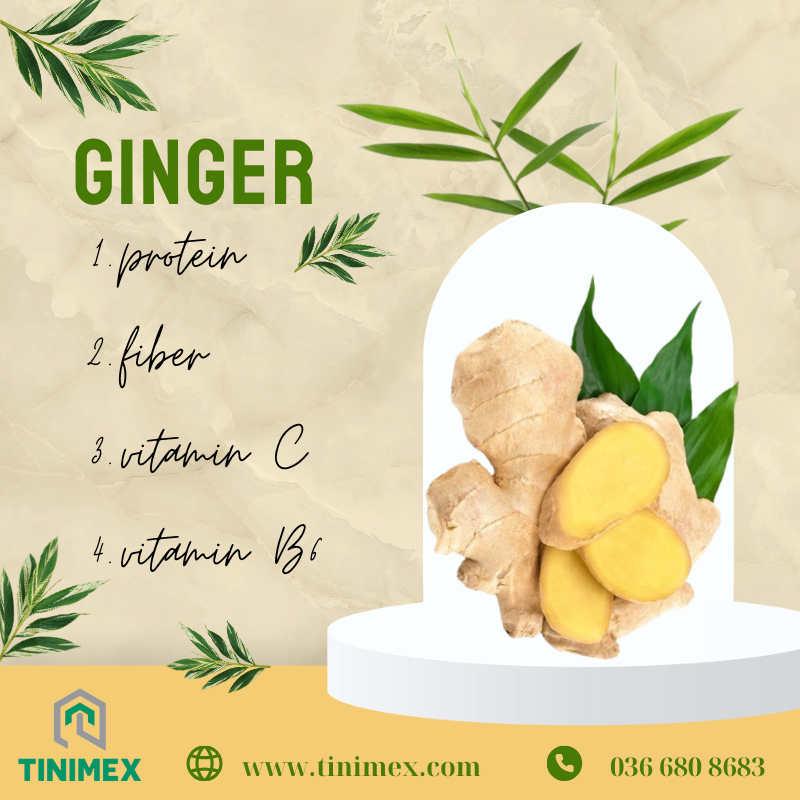Fresh Ginger Cultivation Process: How to having an optimal ginger yield
Fresh Ginger Cultivation Process: How to having an optimal ginger yield
The process of cultivating and harvesting fresh ginger involves seven essential steps that contribute to its quality and yield. Discover the journey from seed preparation to storage in this guide.
1. Seed preparation for ginger:
In the realm of ginger cultivation, selecting the right variety is crucial.
Currently, there are various ginger varieties known for high productivity and good quality. Farmers select ginger varieties based on their specific conditions and purposes. Good ginger seeds should meet certain standards, such as having mature, shiny, and fresh skin, being plump, and having at least two bud eyes.
Before germination, ginger seeds need to be treated with fungicides to prevent diseases. Some commonly used fungicides include Rhidomiel, Validacine, and others.
2. Germination:
The germination process involves selecting mature ginger rhizomes (the main stem part of the ginger plant or ginger over nine months old), breaking or cutting rhizome segments 2.5 – 5 cm long, with at least one bud eye on each segment.
Ginger rhizome segments are placed in a container filled with clean sand or a layer of sand 15 – 20 cm deep. Rhizomes are arranged with a spacing of 3 – 5 cm between them, covered with another layer of clean sand, and then watered thoroughly. Throughout the germination process, it is crucial to maintain humidity at 80 – 90%, watering once a day. Germination takes place 10 – 15 days before planting, and ginger can be transplanted once the shoots emerge.
3. Planting:
Ginger planting conditions best at temperatures above 20°C (68°F). Therefore, the ideal planting season for northern provinces is in early spring, typically from February to March in the lunar calendar.
While ginger is not very picky about soil type, it grows best in well-draining soil with high organic content, light mechanical composition, good water drainage, and exposure to sunlight. Ginger can be intercropped with other crops, but productivity may decrease in such fields.
Ginger is planted in rows with a staggered arrangement (similar to a zigzag pattern), with rows spaced 40 – 50 cm apart and plants spaced 30 – 40 cm apart. Prepared seeds (previously selected) are planted 5 – 7 cm deep, with bud eyes or shoots facing upward or horizontally. The soil is then gently pressed around the rhizomes, and the surface is covered with fine soil.
4. Care for Ginger Plants:
Depending on the level of irrigation, soil fertility, and plant growth, fertilization can be done as follows:
- Base fertilizer: Utilize organic fertilizers or well-rotted manure at a rate of approximately 8 – 10 tons/ha + 190 – 220 kg Superphosphate/ha (equivalent to 280 – 360 kg/ha of organic fertilizer + about 7-8 kg Superphosphate/ha in northern provinces).
- Topdressing: The amount of fertilizer per field: 3-4 kg urea + 4-5 kg potash, evenly divided into four applications. The first application is 30 days after planting, the second at 60 days, the third at 90 days, and the fourth at 120 days.
Application method: Spread fertilizer 10 cm from the base of the plant and hill up the base to cover the fertilizer. Then, water the plants to help them absorb nutrients effectively.
5. Pest and disease control for ginger:
During the early growth stage of ginger shoots, attention should be given to snails that may nibble on the ginger tips. If snails are detected, manual removal is recommended, avoiding the use of pesticides.
Ginger plants are susceptible to certain diseases such as rhizome, root, and stem rot, which can be controlled by regularly spraying fungicides every 10 – 15 days.
6. Harvesting:
The harvesting time varies depending on the intended use, with ginger typically ready to harvest from the fifth month onwards. When harvesting ginger, care should be taken to dig it carefully to avoid breakage and damage, reducing the risk of pest infestation.
Around 7 – 8 months after planting, ginger plants will mature, and the leaves will begin to wither and fall. It is advisable to stop watering in preparation for harvest. So ginger harvesting tip is choose a sunny day.
7. Ginger storage techniques:
After harvest, ginger should be stored in a cool, well-ventilated place. It can be packed into bags for transportation to the consumption location.

